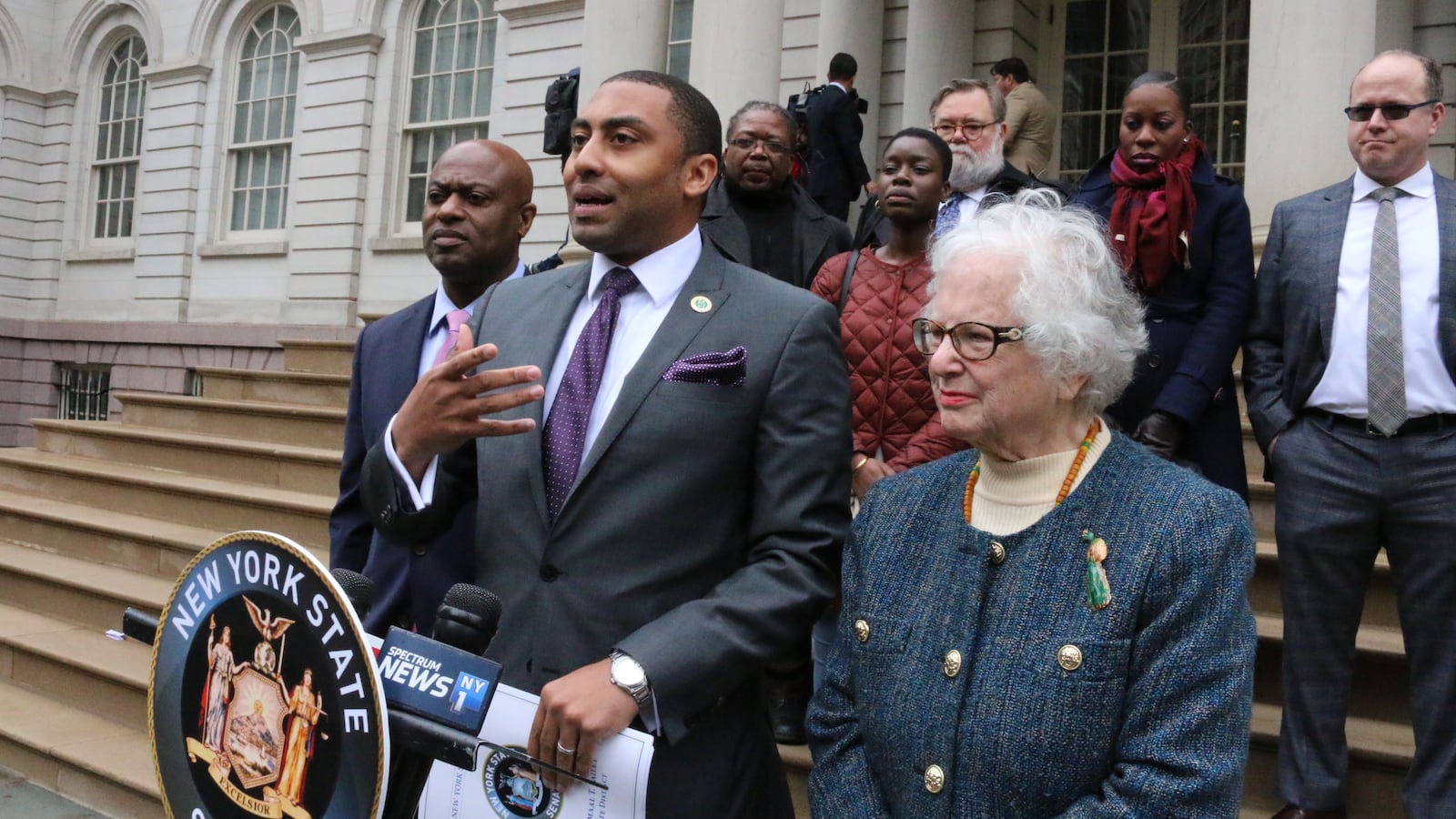Legislation introduced Thursday aimed at integrating New York City’s specialized high schools skirted one big issue: the admissions test.
Instead, the bills would create a new citywide test for sixth graders designed to help them prepare for the exam; establish a commission to study the admissions process and issue recommendations; and require that all specialized high schools admit some students who just missed the cutoff score.
“We want to make sure that we’re doing more to allow more students access to the test,” said Jamaal Bailey, a state senator who represents parts of the Bronx and crafted the legislation.
Specialized high schools have remained starkly segregated for years, despite pledges from Mayor Bill de Blasio to promote diversity at them. Last month, the education department announced black and Hispanic students accounted for just 10.4 percent of offers to the eight specialized schools that admit students based on a single exam — a number that has gone essentially unchanged since de Blasio took office more than four years ago. (Citywide, nearly 70 percent of students are black or Hispanic.)
Standing on the steps of City Hall, and flanked by the alumni foundation president at Brooklyn Tech — a specialized school — Bailey unveiled a legislative package he said would help move the needle.
But there are good reasons to be skeptical of the plan. Here are three of them.
1. Experts say changing the admissions process is crucial to integrating specialized schools. This legislation leaves it alone.
Critics of the current admissions system argue that it favors students who have time and resources to prepare for an admissions test that serves as the sole gatekeeper for the ultra-selective schools. And researchers at New York University have shown that changing the admissions requirements to offer admission to the top 10 percent of students at every middle school is one of the few surefire ways to “substantially change” the schools’ demographics.
2. The proposal doubles down on a diversity program that is already in place — and isn’t making a dent.
Bailey’s legislation requires each specialized high school to participate in the Discovery program, which allows a small set of students to gain admission even if they score just below the cutoff. The city has already expanded that program to include every specialized school and it has helped a shrinking share of black and Hispanic students in recent years. And even if it helped more underrepresented students, its impact would likely be small: Just 4 percent of all specialized school admissions offers were issued through the program last year.
3. The bill assumes preparation will help underserved students gain admission, but the city’s test prep programs haven’t made a big difference.
The legislation creates a citywide test for sixth graders that would mimic the current exam for eighth graders, giving students a head start on preparing for the exam while simultaneously increasingly awareness of it. “Many children in my district don’t know about the test,” he said. But the city has already boosted public test prep programs (which some students have said are not high-quality) and expanded outreach to increase the number of students who take the exam. None of those efforts have changed the racial balance at specialized high schools, which are just as segregated as they were before those programs were expanded.
Bailey, who is himself a graduate of Bronx Science, a specialized school, acknowledged that his proposals may not radically change the demographics at the elite schools. But he said he is “not averse” to broader changes and said he imagined the new commission created by his legislation could recommend more systemic changes.
“I believe they will pay off,” he said. “It’s more opportunities and more information for children.”

